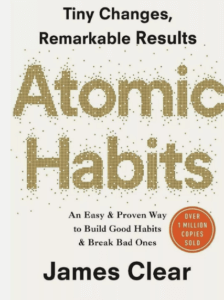In the dynamic landscape of B2B marketing, securing investment from the C-suite hinges on effectively communicating the value of marketing efforts. Senior marketers in mid to large firms must demonstrate a balance between short-term demand generation and long-term brand building while showcasing resilience and adaptability.
The balanced approach: Brand building and demand generation
To gain C-suite buy-in, illustrate a strategy that balances immediate needs with sustainable growth. Short-term demand generation drives sales and meets targets, whereas brand building enhances market positioning and fosters customer loyalty. This dual approach is akin to a balanced diet: quick fixes might offer immediate energy, but long-term vitality requires a sustainable approach.
Effective communication strategies
To communicate marketing value effectively, marketers should:
- Align with business objectives: Ensure marketing strategies are directly linked to business goals. This alignment helps the C-suite see how marketing initiatives drive company success.
- Utilise data-driven insights: Present concrete data that highlights the impact of marketing campaigns on lead generation, conversion rates, and ROI. Data-driven insights lend credibility and demonstrate tangible benefits.
- Showcase success stories: Highlight real-life examples where marketing efforts have led to significant business outcomes. These success stories resonate with executives and illustrate practical benefits.
- Focus on KPI: Track and present key performance indicators (KPIs) that demonstrate both short-term and long-term value. These include customer acquisition cost (CAC), lifetime value (LTV), brand awareness, and engagement rates.
Understanding stakeholder needs
Different stakeholders in the C-suite have varying requirements and priorities. Tailor your communication to address these needs effectively:
- Chief Financial Officer (CFO): The CFO is focused on financial efficiency and return on investment. Highlight metrics like CAC, ROI, and LTV to demonstrate the financial impact of marketing activities. Show how marketing investments contribute to cost savings and revenue growth and establish agile budgeting to allow for adaptability.
- Chief Revenue Officer (CRO): The CRO prioritises revenue generation and sales performance. Emphasise metrics such as lead quality, conversion rates, and sales pipeline growth. Take a RevOps approach and showcase how marketing efforts drive high-quality leads and support the sales team’s objectives.
- Chief Executive Officer (CEO): The CEO looks at the overall strategic vision and long-term growth. Present a balanced view of short-term results and long-term brand building. Highlight how marketing aligns with the company’s strategic goals and supports sustainable growth.
Demonstrating value over time
Understanding and tracking the right KPIs is essential for demonstrating marketing value over time. Essential KPIs include:
- Customer Acquisition Cost (CAC): Measures the cost of acquiring a new customer. A lower CAC indicates more efficient marketing.
- Customer Lifetime Value (LTV): Estimates the total revenue a business can expect from a single customer account. A higher LTV signifies greater long-term value and is influenced by retention and expansion metrics.
- Brand awareness: Metrics such as brand recognition, and social media engagement gauge the effectiveness of brand-building activities.
- Funnel metrics: Track performance at each stage of the buyer journey:
a) Awareness stage: Impressions, click-through rates (CTR), and engagement rates.
b) Consideration stage: Lead generation, cost per lead (CPL), and lead quality scores.
c) Decision stage: Conversion rates, sales-qualified leads (SQLs), and win rates and value. - Retention and expansion metrics: Key for understanding customer loyalty and growth potential:
a) Retention rate: Measures the percentage of customers retained over a period.
b) Churn rate: Indicates the percentage of customers lost over a period.
c) Customer expansion: Tracks upsell and cross-sell success rates.
d) Net Promoter Score (NPS): Measures customer satisfaction and loyalty, reflecting the long-term impact of brand-building efforts.
6. Avoiding vanity metrics: Vanity metrics, such as social media likes and website traffic, can be misleading as they do not necessarily correlate with business growth. Focus on actionable metrics that provide insights into customer behaviour and business impact.
Addressing budget cuts and resource reduction
Budget cuts and headcount reductions can significantly impact marketing effectiveness. To manage these challenges:
- Show consequences with data: Use data to project the business impact of budget cuts, illustrating how reductions might lead to fewer high-quality leads, lower brand engagement, and ultimately affect revenue.
- Leverage agile budgeting: Adopt agile budgeting practices that allow for rapid scaling up or down based on market conditions. This approach ensures flexibility without compromising long-term goals.
- Avoid tactical short-termism: Balance short-term needs with long-term brand-building activities to avoid focusing solely on immediate results.
Building resilience in marketing teams
In today’s ever-changing business environment, resilience is key. Resilient marketing teams adapt to shifts and support evolving objectives, reflecting positively in performance. Strategies include:
- Embrace change: Foster a culture open to change and quick to adapt. Agile marketing practices, such as regular sprint reviews and iterative planning, help teams stay flexible and responsive.
- Invest in your team: Continuous professional development ensures your team has the skills needed to navigate new challenges and leverage emerging opportunities.
- Foster collaboration: Promote cross-functional teamwork to drive more effective and innovative marketing solutions.
Agile marketing practices
Embed agile marketing practices that are data-driven and focused on continuous improvement because the way your teams work underpins the results you achieve:
- Experimentation and learning: Implement a test-and-learn approach to discover what works best and iterate based on findings.
- Data-driven decision making: Use data from experiments to refine strategies and demonstrate business impact.
- Collaborative cuts: Work with the C-suite to make informed, collaborative decisions about budget cuts, ensuring they are strategic and support long-term goals.
And finally, lead by example
Demonstrate a growth mindset, take the feedback given and work with it. B2B marketers must adopt a strategic approach to effectively communicate their value to the C-suite. By aligning marketing initiatives with business objectives, leveraging data-driven insights, focusing on meaningful KPIs, and adopting agile practices, marketers can secure the necessary investment for success. Understanding the specific needs of different stakeholders, avoiding vanity metrics, and demonstrating the tangible impact of marketing activities will ensure the C-suite recognises marketing as a critical driver of business growth.
For more insights and agile marketing strategies, explore Bright’s Bright Ideas. By showcasing the strategic value of marketing, senior marketers can elevate their role and drive enduring success.








































